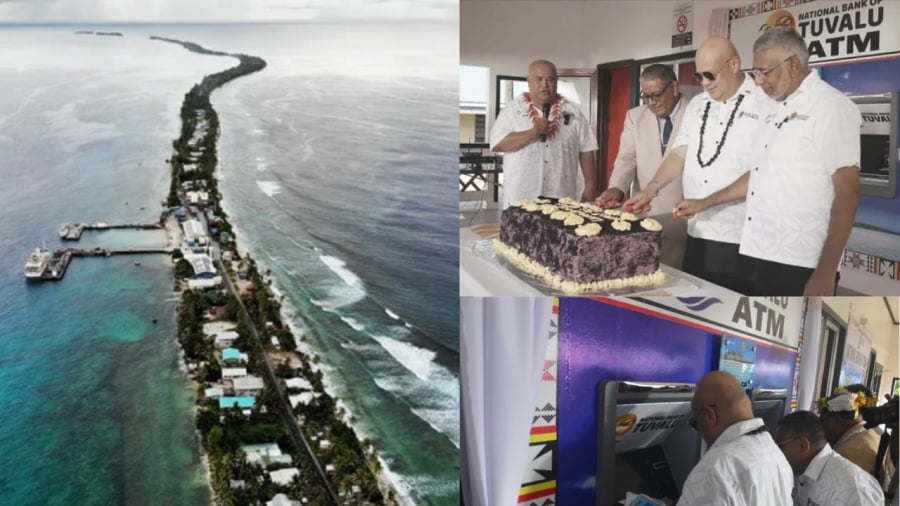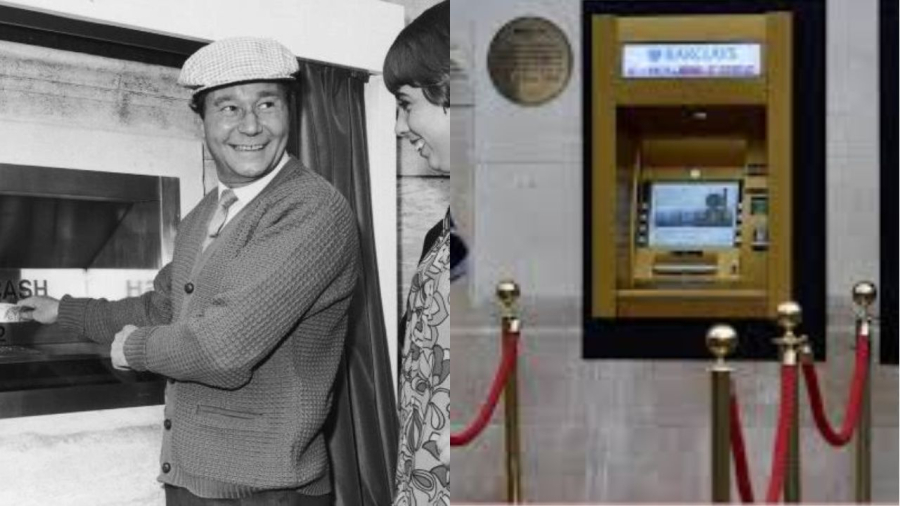Tuvalu’s Historic Moment: The Arrival of the First ATM in 2025
A memorable milestone was reached in Tuvalu on April 15, 2025, with the inauguration of the country’s first-ever ATM machines. This event marked a significant step forward in financial technology and symbolized a positive shift towards economic development for the nation’s 11,000 residents.
Tuvalu, a tiny nation nestled between the powerhouses of Australia and Hawaii, spans just 26 square kilometers and comprises nine small coral atolls. Due to its isolated geography, all transactions in Tuvalu, from daily purchases to tourist spending, have traditionally been conducted in cash. Thus, the introduction of ATMs represents a historic and groundbreaking development for the country’s financial system.

The inauguration ceremony, held on the main island of Funafuti, was graced by Prime Minister Feleti Teo and other senior officials. The Prime Minister hailed this event as a “major turning point in the nation’s financial system modernization journey.” The celebrations included a grand ceremony with a giant chocolate cake-cutting to commemorate this momentous occasion.
The ATM network is operated by the National Bank of Tuvalu, with technological support from Pacific Technology Limited, a financial technology company operating in the region. According to Nisar Ali, a representative of Pacific Technology, the implementation of the ATM system will break down financial barriers and provide the people of Tuvalu with easier access to modern, convenient, and secure banking services.
Tuvalu: A Secluded Nation with Unique Characteristics
Tuvalu faces infrastructure challenges, with only one airport located in Funafuti, a handful of weekly flights from Fiji, and no domestic air travel options. The country relies on a ferry system to connect its islands, and when there are no flights, the airport runway doubles as a community space for sports like football and rugby.
Not only is Tuvalu geographically isolated, but it is also one of the most vulnerable countries to the impacts of climate change. With a maximum elevation of just 4.5 meters above sea level, the nation is threatened by rising sea levels and saltwater intrusion, which directly affect agricultural land and the daily lives of its citizens.
Tuvalu captured the world’s attention in 2021 when former Foreign Minister Simon Kofe delivered a speech at the COP26 conference while standing knee-deep in the ocean, sending a powerful message about the nation’s fragile existence.
Amidst the challenges posed by climate change, economic constraints, and transportation limitations, the introduction of ATMs in Tuvalu signifies not just a technological advancement but also the government’s strong determination to embrace modernization and improve the quality of life for its citizens.
While it may seem like a small step, in a vulnerable and tiny nation like Tuvalu, it brings immense hope for the present and the future.
The Evolution of ATMs: From Innovation to Decline
The world’s first ATM was installed on June 27, 1967, at a Barclays bank branch in Enfield, north of London, UK. Invented by John Shepherd-Barron, the concept emerged from the limited banking hours of that time and his own experience of arriving at the bank after it had closed. He initially considered a machine that dispensed chocolate but eventually settled on cash.

The first person to withdraw cash from this historic machine was Reg Varney, a well-known actor. At that time, customers had to insert a transaction coupon into the ATM tray to withdraw a maximum of £10.
In 2017, to commemorate the 50th anniversary of the first ATM, Barclays coated the machine at the Enfield branch in gold. A commemorative plaque and a red carpet for customers were also added next to the machine.
The Decline of ATMs in the Digital Age
While ATMs were once considered a vital invention to overcome bank closing hours, their significance has diminished over the past 50 years with the rise of digital transactions and the shift away from cash.
The global trend shows a decreasing number of ATMs. In 2018, there were approximately 3.24 million ATMs worldwide, a 1% decrease from 2017. By 2021, the number had further dropped to around 3.1 million, and it continues to decline.
As the world moves towards digital transactions and a reduction in cash usage, Tuvalu is just beginning its ATM journey. What are your thoughts on this? Do you still rely on ATMs for your financial needs, or have you transitioned to digital alternatives?
5 Quick and Detailed Ways to Check Your MB Bank Account in 2024: Start Monitoring Now!
There are several ways to view MB Bank account numbers in 2024, such as contacting the hotline, visiting the branch directly, checking via SMS messages, or looking up online on the MB Bank application/website. Details on how to do these steps will be provided by FPT Shop right away. Please stay tuned.





































